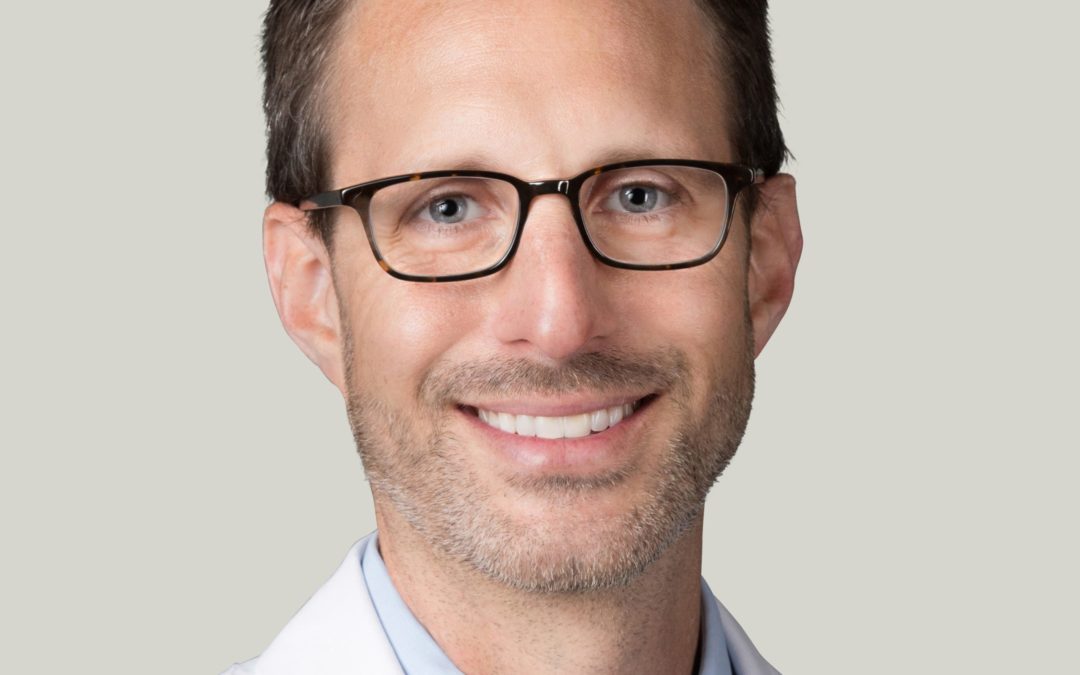Curing Hepatitis C: The Pathway to Disease Elimination
With Andrew Aronsohn, MD
Chronic hepatitis C is an infection of the liver caused by a blood-borne virus, affecting an estimated 3.5 million people living in the United States today. It is transmitted from person to person most often through needle-sharing related to intravenous drug use, and can persist for years with no symptoms. However, hepatitis C leads to liver damage (cirrhosis of the liver), liver cancer, liver failure, and even death. However, as recently as 2013, hepatitis C is notable for another very important reason: it has a cure. Today, via direct impacting antiviral agents, or DAAs, more than 90% of patients with hepatitis C can be cured through 8-12 weeks of an oral therapy, with minimal to no side effects.
For Andrew Aronsohn, MD, Associate Professor of Medicine at the University of Chicago Digestive Diseases Center, the new challenges in treating the disease are not about traditional clinical research, but about public health.
Dr. Aronsohn explains, “It’s just mind-blowing. If there is such a thing as a miracle cure, it really is these new medications. When I began my career, we had clinical trials, and new therapies coming out, and excitement about these new treatment options. But now, there’s very little new research and development because we’ve done it: it’s hard to beat eight weeks of treatment with nearly a 100% cure rate for all patients. So now, we have shifted to focus on the public health ramifications of treatment of hepatitis C. Now, the World Health Organization, the National Academy of Medicine, and others have begun to focus on elimination strategies to completely eradicate hepatitis C, as soon as 2030.”
Thanks, in part, to the COVID-19 global pandemic, there is a renewed interest in and focus on access to care in the medical community, as testing and vaccine roll-out have challenged existing models for providing medical treatment.
“We are now facing the reality of how to provide this life-changing treatment. It uncovers all the health disparities faced by this patient population: limitations in patient awareness, lack of access to care, and constrained capacity of providers to treat hepatitis C. There are 3.5 million people with hepatitis C in the United States; we’ve probably cured somewhere on the order of 10% of them. That’s the challenge now,” Explains Dr. Aronsohn.
Dr. Aronsohn and University of Chicago Digestive Diseases colleagues recently completed work on a large CDC-funded grant to promote the diagnosis and treatment of hepatitis C; in essence, a micro-elimination project focused on the Chicago area. The project involves building a centralized database to track patients, identify patterns, and locate potential hotspots, as well as ECHO Chicago. Spearheaded at the University of Chicago Medicine by Dr. Aronsohn, ECHO uses web-based educational forums to train community health care providers at federally qualified health centers (FQHCs) in diagnosis and management of hepatitis C, and has reached over 400 providers in and around the city of Chicago.
Explains Aronsohn, “There are only so many patients we can see at our clinics at UChicago, but now there are providers throughout the city, who have taken the class, who know how to treat hepatitis C, and who are empowered to independently treat patients… this is all how you build capacity to get patients the care they need.”
Is the 2030 hepatitis C elimination timeline realistic? It’s hard even for experts to know. Explains Dr. Aronsohn, “We have reached extraordinary milestones. Starting in 2013, hepatitis C is no longer the leading cause of liver transplantation… and that’s encouraging. But the United States has a long way to go… I’m hopeful that with the right public health infrastructure, we can continue make great progress.”

